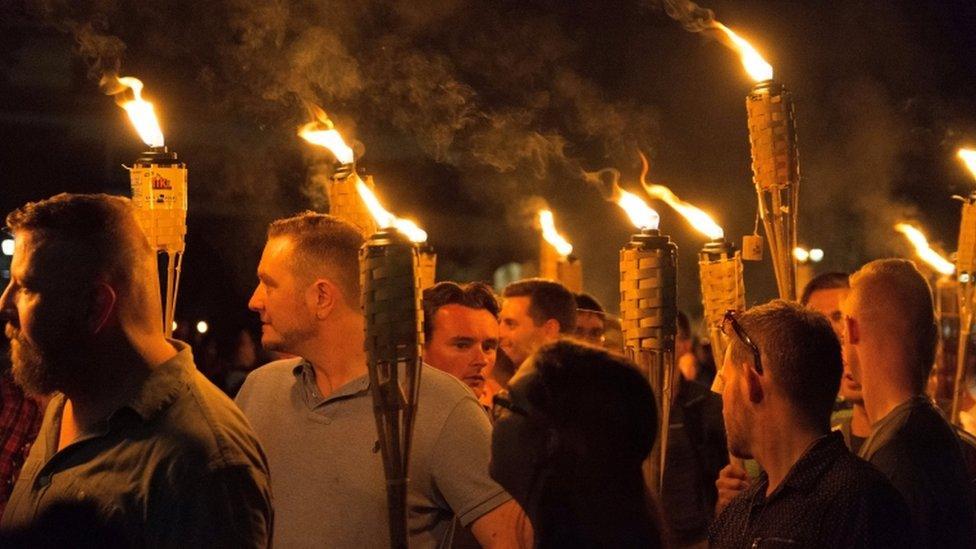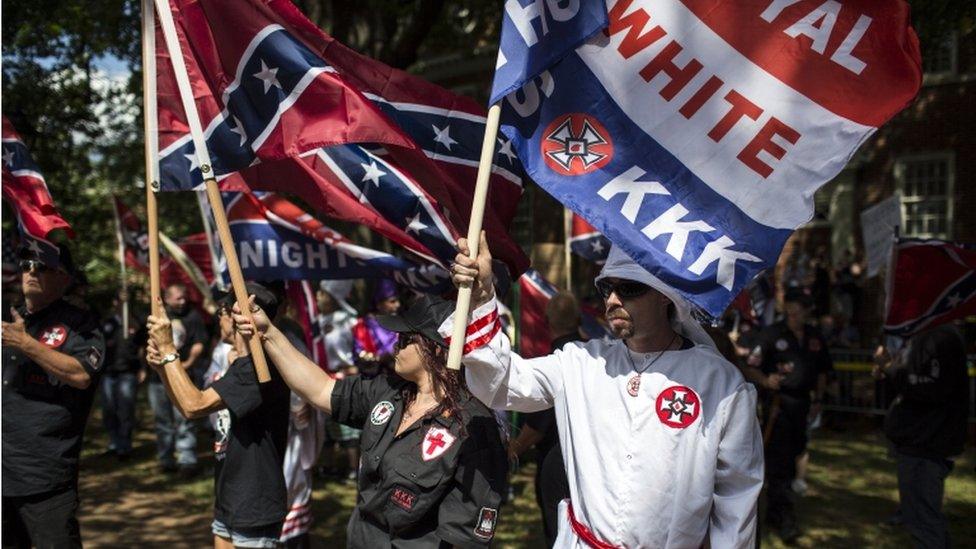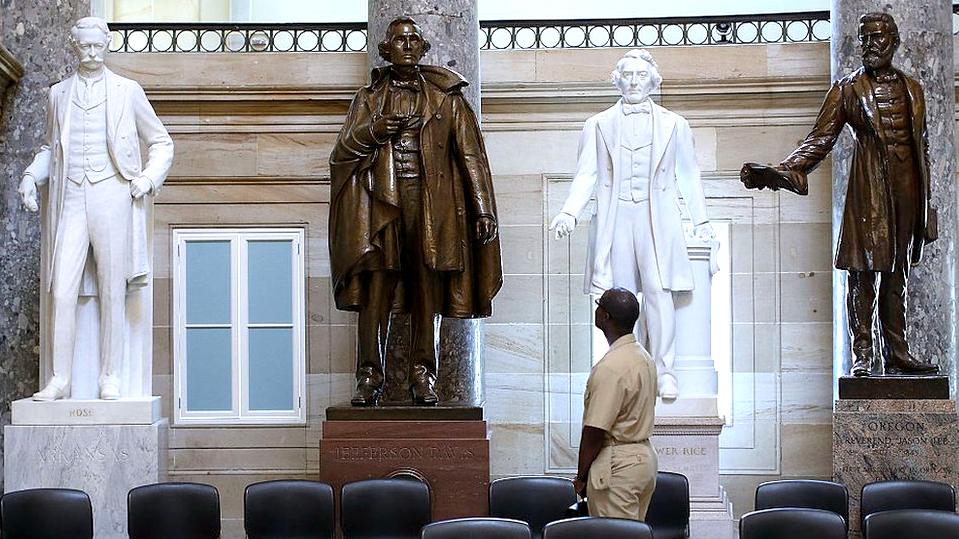Judge: Remove Charlottesville Confederate statue tarpaulins
- Published

Tarpaulins covering two Confederate statues in Charlottesville, Virginia must be removed, a court has ruled.
The city put up the sheeting in the days after a deadly far-right rally last August which left a counter-protester and two police officers dead.
The city had argued the "shrouds" were meant to honour those killed and injured, but the judge found they interfered with park tourism.
The judge also allowed a lawsuit to preserve the statues to move forward.
Judge Richard Moore ruled on Tuesday that the black plastic sheeting over the monuments to Robert E Lee and Thomas "Stonewall" Jackson must be removed in the next 15 days.
Racism in the US: Is there a single step that can bring equality?
The Charlottesville City Council had voted unanimously to place "mourning shrouds" over the statues to honour the three dead.
Heather Heyer died after being run over by a car during the 12 August 2017 Unite the Right rally.
Virginia state police troopers Jay Cullen and Perke MM Bates died when their helicopter crashed as they policed the event.
Judge Moore's decision was based on his opinion that the city had never defined how long the coverings would remain, and that they interfered with the public's ability to enjoy the parks.
In August a car rammed into a group of counter-protestors, killing one and injuring 19 others
"The statute that prohibits the moving or damaging of such memorials and monuments places on the locality the duty to protect, preserve, and care for such," he wrote.
"I interpret the law," Judge Moore told lawyers, according to local reports. "I don't make it up."
Armed police officers were stationed outside the court and nearby the statues as protestors debated for and against their preservation.
"Every day we have to walk by this emblem to white supremacy, it's causing irreparable harm to this community," Ben Daugherty, an organiser for a group called Showing Up for Racial Justice, told WCAV-News.
"So we say the judge's ruling is wrong," he continued.
City officials have said they want to permanently remove the statues honouring heroes of the pro-slavery southern Confederacy in the US Civil War.
But like other Virginia cities, they lack the authority to remove them without permission of the state legislature.
In his ruling the judge found a lawsuit to preserve the statues can resume.
However, he also found the city had the right to change the name of the two parks - Emancipation and Justice Parks - where the statues are located.
The plastic sheeting had been removed and replaced dozens of times since August as the legal fight goes on.
A trial to determine their future will probably be held later this year or in early 2019.
- Published13 August 2017

- Published8 October 2017

- Published13 August 2017

- Published17 August 2017

- Published7 November 2016
